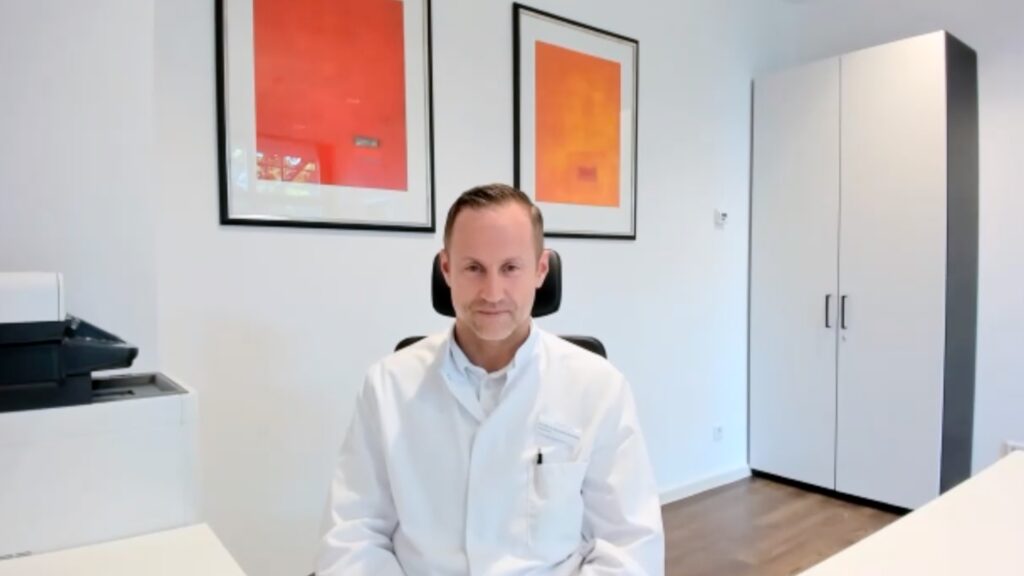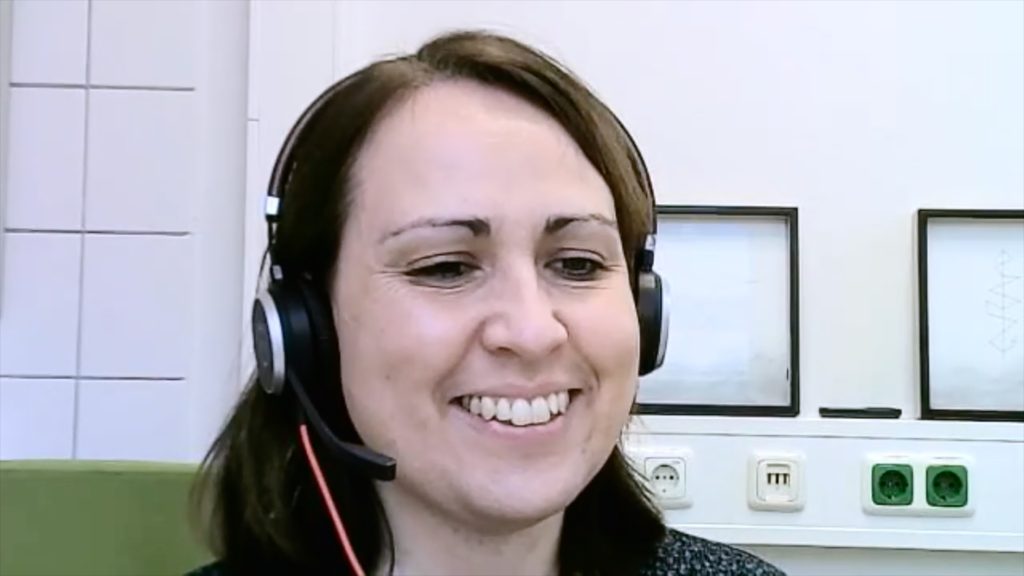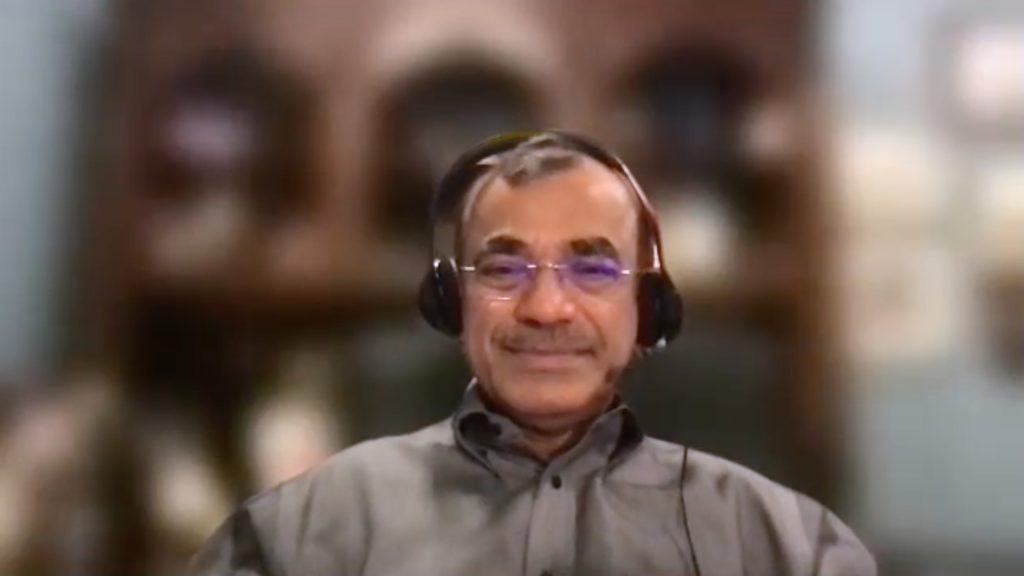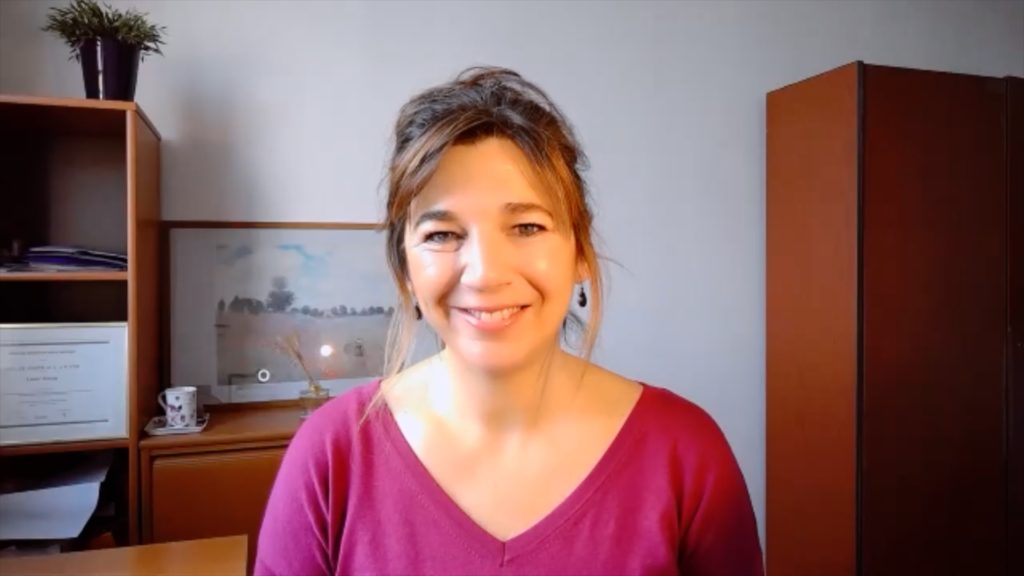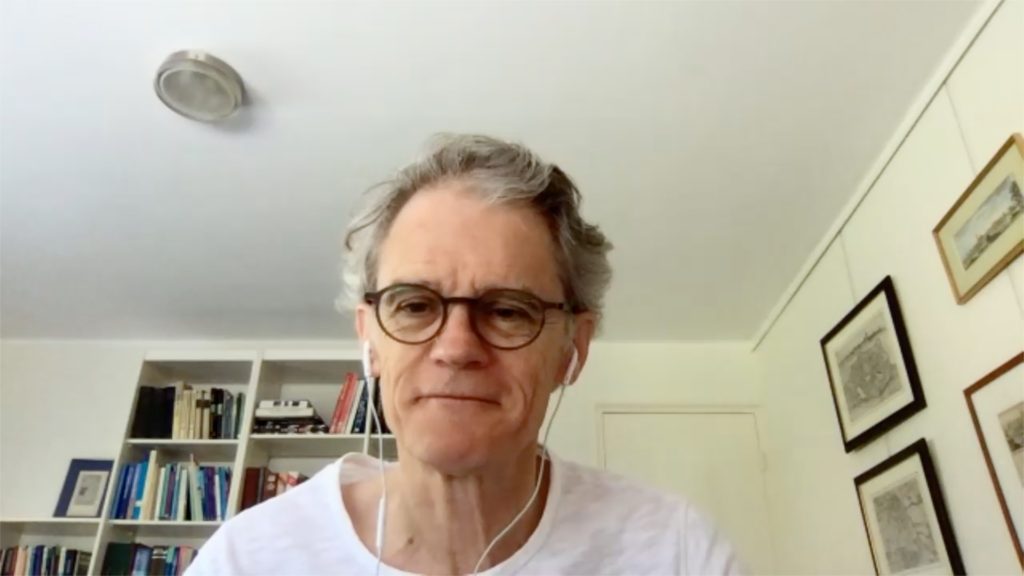touchIMMUNOLOGY coverage of EULAR 2025:
The ARGO trial (NCT05640245) was a randomized, double-blind, placebo-controlled phase II trial investigating the IL-17A- and IL-17F-inhibitor, sonelokimab, for the treatment of psoriatic arthritis (PsA). Data from the ARGO trial demonstrated the efficacy of sonelokimab on joint and skin outcomes.1 In this interview, Prof. Laure Gossec (Sorbonne Université and Pitié-Salpêtrière Hospital, Paris, France) discusses the importance of patient-reported outcomes (PROs) in evaluating treatment effectiveness in PsA clinical trials. Prof. Gossec also highlights the effects of sonelokimab on patient reported psoriatic arthritis symptoms and quality of life outcomes in the ARGO trial and the next steps for the clinical development of sonelokimab.
The abstract “Effects of sonelokimab, an IL-17A- and IL-17F-inhibiting Nanobody, on patient-reported psoriatic arthritis symptoms and quality of life: results from the randomized, double-blind, placebo-controlled Phase 2 ARGO trial” was presented at EULAR 2025, Barcelona, 11–14 June 2025.2
Questions
- How important is the inclusion of patient-reported outcomes (PROs) in evaluating treatment effectiveness in psoriatic arthritis (PsA) clinical trials? (0:14)
- Can you describe the mechanism of action of sonelokimab and how it targets psoriatic arthritis pathology? (1:10)
- What were the key objectives and methodology of the Phase II ARGO trial evaluating sonelokimab in PsA? (2:06)
- What were the clinical endpoints of the trial and how well were they achieved? (2:49)
- What were the new findings in terms of PROs? (4:05)
- How do these findings position sonelokimab for future clinical development in PsA treatment? (4:46)
References
- Mc Innes IB, Coates LC, Mease PJ, et al. OP0195 EFFICACY AND SAFETY OF SONELOKIMAB, A NOVEL IL-17A- AND IL-17F-INHIBITING NANOBODY®, IN PATIENTS WITH ACTIVE PSORIATIC ARTHRITIS (PsA): RESULTS FROM THE GLOBAL, RANDOMIZED, DOUBLE-BLIND, PLACEBO-CONTROLLED PHASE 2 ARGO TRIAL. Annals of the Rheumatic Diseases. 2024;83:154–155.
- Gossec L, Ogdie A, Gottlieb AB, et al. POS0428 EFFECTS OF SONELOKIMAB, AN IL-17A- AND IL-17F-INHIBITING NANOBODY, ON PATIENT-REPORTED PSORIATIC ARTHRITIS SYMPTOMS AND QUALITY OF LIFE: RESULTS FROM THE RANDOMIZED, DOUBLE-BLIND, PLACEBO-CONTROLLED PHASE 2 ARGO TRIAL. Annals of the Rheumatic Diseases. 2025; 84(Suppl. 1):660–661.
View further psoriatic arthritis content here!
Disclosures: Laure Gossec discloses receiving consulting fees from AbbVie, AlfaSigma, Amgen, BMS, Celltrion, J&J, Lilly, Moonlake, Novartis, Pfizer, Stada, and UCB; and receiving research grants from AbbVie, Lilly, Novartis, and UCB.
This content has been developed independently by Touch Medical Media for touchIMMUNOLOGY. It is not affiliated with the European Alliance of Associations for Rheumatology (EULAR). Views expressed are the speaker’s own and do not necessarily reflect the views of Touch Medical Media.
Interviewer/Editor: Victoria Jones.
Cite: Laure Gossec. #EULAR2025 Impact of Sonelokimab on Patient-Reported Outcomes in Psoriatic Arthritis: Updated Findings from the Phase II ARGO Trial. touchIMMUNOLOGY. 24 June, 2025.
Abstract: Gossec L, Ogdie A, Gottlieb AB, et al. POS0428 EFFECTS OF SONELOKIMAB, AN IL-17A- AND IL-17F-INHIBITING NANOBODY, ON PATIENT-REPORTED PSORIATIC ARTHRITIS SYMPTOMS AND QUALITY OF LIFE: RESULTS FROM THE RANDOMIZED, DOUBLE-BLIND, PLACEBO-CONTROLLED PHASE 2 ARGO TRIAL. Annals of the Rheumatic Diseases. 2025; 84(Suppl. 1): 660–661.
Transcript
Hello. My name is Laura Gossec, I’m a Professor of Rheumatology in Paris, France at Sorbonne Université and Pitié-Salpêtrière Hospital. read more
Q. How important is the inclusion of patient-reported outcomes (PROs) in evaluating treatment effectiveness in psoriatic arthritis (PsA) clinical trials? (0:14)
Psoriatic arthritis is a complex disease because it involves both the joints and the antithesis and sometimes the actual skeleton, as well as the skin and other extra-muscular skeletal manifestations. Perhaps because of this PSA really has a wide impact on patients’ lives. It alters how patients feel about themselves. It gives them pain, fatigue, and also functional disability, and it’s very often linked to psychological distress as well. So, it’s really important when we’re assessing the efficacy of a drug to look across the different manifestations and also to look at how the patient feels with this disease, therefore, assessing the patient reported outcomes.
Q. Can you describe the mechanism of action of sonelokimab and how it targets psoriatic arthritis pathology? (1:10)
The drug we’re discussing here is sonelokimab, and this is a highly original drug because it’s a nanobody. It only uses part of the gamma globulin that is usually used for antibodies and this is derived from a technique from camels. This allows us to have very lightweight, only 40 Kilo-Daltons, antibodies which target a specific target. In this case, sonelokimab targets IL-17, both the A and F components of IL-17. So it’s a dual inhibitor of IL-17A and IL-17F, but with a higher specificity for its target and also a much lower weight, which means it has higher penetration into the tissues.
Q. What were the key objectives and methodology of the Phase II ARGO trial evaluating sonelokimab in PsA? (2:06)
The ARGO trial is the first trial of a nanobody, sonelokimab, in psoriatic arthritis. It’s a randomized, controlled, phase II trial. It has a placebo-control for the first 12 weeks and then another period without placebo. Two different doses of the sonelokimab antibody are assessed and there’s also an adalimumab reference arm throughout the trial. Because this is a phase II trial, it’s only about 40 patients in each of the groups, so we will need further data to confirm the findings from the ARGO trial.
Q. What were the clinical endpoints of the trial and how well were they achieved? (2:49)
The primary outcome in the ARGO phase II trial was ACR50, and this was achieved with both of the doses of sonelokimab, which is 60mg and a 120mg, achieving around 46% of ACR50 versus only 20% in the placebo arm. There was also a significant benefit on the secondary outcomes; ACR70 was reached by 39% to 43% of patients treated with sonelokimab by the end of the 6-month trial. We also saw very good responses on the skin with around 50% of patients treated with sonelokimab getting complete skin clearance versus 15% in the placebo arm, and this even increased to 75% percent after six months of follow-up. We see that the composite outcome of ACR70 and PASI 100 is reached by close to 50% of patients after six months, whereas minimal disease activity, which is a bit like remission, was reached by 62% of patients after six months, which is very high.
Q. What were the new findings in terms of PROs? (4:05)
At this congress, EULAR 2025, I presented a poster of the effects of sonelokimab in the ARGO trial, specifically on patient reported outcomes. We were able to confirm that when we use outcomes such as the PsA Impact of Disease (PsAID)-12, which looks at the physical but also the mental impact of psoriatic arthritis, we have approximately 60% to 70% of patients who experience a major reduction in the impact related to the disease, as well as a major reduction in pain at week 24. So very encouraging results from the patient’s point of view.
Q. How do these findings position sonelokimab for future clinical development in PsA treatment? (4:46)
I think these results are extremely encouraging. The results across the composite scores such as ACR50, ACR70, and also the composite of ACR and PASI response, as well as MDA, were all consistently higher for both of the sonelokimab doses compared to the adalimumab reference arm. Now as you know, dear colleagues, it’s quite difficult to do better than adalimumab on joints and anthesis when assessing psoriatic arthritis. So, this is very promising. We know that the mode of action of a double inhibition of IL-17A and IL-17F is very efficacious and there is data from another drug, bimekizumab, in this regard.
This is only phase II data, so we will need to go further with the ongoing phase III trial, actually, two phase III trials are ongoing. Personally, I find it very exciting to think that we might be able to break the glass ceiling of around 50% to 55% of minimal disease activity, whatever the drug used, in psoriatic arthritis. So we can look forward to the phase III data within a year or so.
Subtitles and transcript are autogenerated.
SIGN UP to TouchIMMUNOLOGY!
Join our global community today for access to thousands of peer-reviewed articles, expert insights, and learn-on-the-go education across 150+ specialties, plus concise email updates and newsletters so you never miss out.






